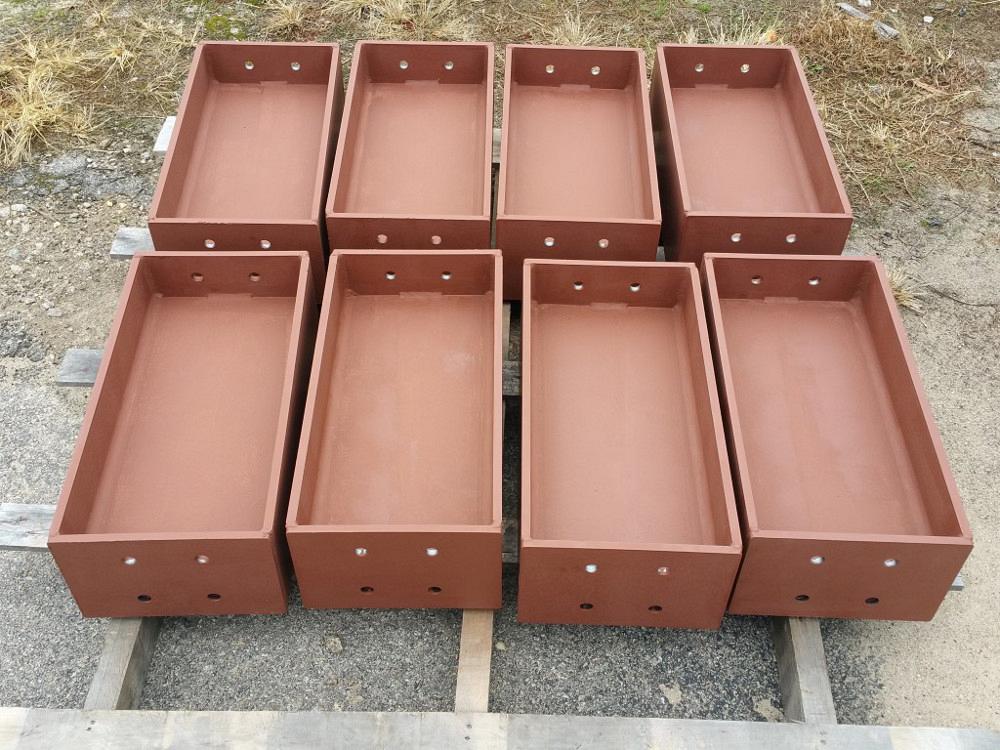- FMA
- The Fabricator
- FABTECH
- Canadian Metalworking
Categories
- Additive Manufacturing
- Aluminum Welding
- Arc Welding
- Assembly and Joining
- Automation and Robotics
- Bending and Forming
- Consumables
- Cutting and Weld Prep
- Electric Vehicles
- En Español
- Finishing
- Hydroforming
- Laser Cutting
- Laser Welding
- Machining
- Manufacturing Software
- Materials Handling
- Metals/Materials
- Oxyfuel Cutting
- Plasma Cutting
- Power Tools
- Punching and Other Holemaking
- Roll Forming
- Safety
- Sawing
- Shearing
- Shop Management
- Testing and Measuring
- Tube and Pipe Fabrication
- Tube and Pipe Production
- Waterjet Cutting
Industry Directory
Webcasts
Podcasts
FAB 40
Advertise
Subscribe
Account Login
Search
Visualizing products made from flat patterns—a valued job shop skill
- By Nick Martin
- December 14, 2016
Working with flat patterns every day is the ultimate practice for learning to visualize how things will “unfold” inside your head. It is not necessarily an easy concept to grasp unless you work with them all of the time.
We see all sorts of parts come into the shop. Some are engineered and modeled in 3-D, while others are the result of reverse origami.
Up, down, up, up … you get the knack for visualizing this over time. Being able to look at something and unfold it inside your head comes from lots of experience. It is a learned art to know how a part is made or even drawn. The process changes from one shop to the next. While there is more than one way to skin a cat, a lot of how it’s done depends on the tooling and capabilities your shop possesses.
A lot of customers supply drawings of parts or sometimes 3-D models. That doesn’t mean these are shop-floor ready. We receive some models that are big “bricks”—nothing but several extrusions to form a pretty picture. This isn’t sheet metal. The customer draws what it wants its final product to resemble and thinks it has done everything. I could go on for days about this. If you’ve read this far, I’m sure you could too.
Most customers have no clue about how assemblies or parts are supposed to unfold. It is one reason that they come to us. They don’t care how anything is produced or how the design process evolves; they just want their parts.
Sometimes we get flat patterns with crazy radii, and the part is often flipped the wrong way. We are told that it doesn’t matter, because once again, they just want their parts.
If I know the product, I will do the right thing and turn the flat pattern the correct way so that it is correct on the application, because this does matter. This process often is most critical when you are working with brushed or polished stainless steel. Most people don’t realize that there is a good side and a bad side to every part. We call the good side the side that is up when cutting it on our laser, and this applies to any CNC cutting table.
The bad side often is made bad while it is being moved or is resting on slats. Feedback from slag and the cutting process can cause imperfections on this side of the metal. This is where a deburring machine, or as everyone in the industry calls it, a “Timesaver,” may come into play. You don’t want the “show side” of a nice cabinet to be on the inside.
When taking parts off the laser, make sure that they match how they appear on the print. Looking down on the part should be the same as looking down on the print. This orients the part correctly and is the next step in producing a correct part. A laser operator who flips and turns parts while stacking is a laser operator who is looking to make enemies at the press brake or the next fabrication process.
Some parts may look symmetrical to the naked eye, but can easily become scrap if they aren’t folded correctly. In our own designs, we often chamfer two corners, or what we call “clip the corners,” if a part is almost square. This helps the press brake operator easily position the part correctly in the machine.
Grain orientation also is important, even if it can’t be seen. Folding a part on the brake isn’t consistent if the grain orientation varies. This is a no-brainer, but fewer parts can be cut on a sheet because of this requirement. It is money saved in the long run, though. Angles can easily be thrown off if the grains are different.
Another tricky part about developing flat patterns is seeing how the part will unfold for assemblies. You have to make the parts small enough so that they can be formed on your equipment with the least amount of welding.
Knowing your limits aids quite a bit in your design process. I may see a tricky bend on a part and make several notes of this on the drawing. Anything to help make a good part. I also might send a few extra parts out to the laser, knowing that perfecting the program might be a challenge. Offline programming would help quite a bit in this situation, but we don’t have that luxury at this point.
I’ve even had an engineer tell me to brake the part to his print and go into detail trying to explain that his way is the right way, even when I know that it will be wrong. Sometimes you just have to put your tail between your legs. I’m just another guy working in a custom fabrication shop.
When parts develop in your shop, it is important to know how they will be made, or if you can even make them. Over time this is second nature and things come together within seconds inside your head. Most of the time you get it right, while other times it takes a team to make it work. Flat patterns are part of every shop, but it comes down to how you can make the part correctly. Some people are blessed with the ability to visualize the process and procedure, while others take longer to develop the skill.
All images courtesy of Barnes MetalCrafters.
subscribe now

The Fabricator is North America's leading magazine for the metal forming and fabricating industry. The magazine delivers the news, technical articles, and case histories that enable fabricators to do their jobs more efficiently. The Fabricator has served the industry since 1970.
start your free subscriptionAbout the Author

Nick Martin
2121 Industrial Park Drive SE
Wilson, NC, 27893
252-291-0925
Related Companies
- Stay connected from anywhere

Easily access valuable industry resources now with full access to the digital edition of The Fabricator.

Easily access valuable industry resources now with full access to the digital edition of The Welder.

Easily access valuable industry resources now with full access to the digital edition of The Tube and Pipe Journal.
- Podcasting
- Podcast:
- The Fabricator Podcast
- Published:
- 04/16/2024
- Running Time:
- 63:29
In this episode of The Fabricator Podcast, Caleb Chamberlain, co-founder and CEO of OSH Cut, discusses his company’s...
- Industry Events
16th Annual Safety Conference
- April 30 - May 1, 2024
- Elgin,
Pipe and Tube Conference
- May 21 - 22, 2024
- Omaha, NE
World-Class Roll Forming Workshop
- June 5 - 6, 2024
- Louisville, KY
Advanced Laser Application Workshop
- June 25 - 27, 2024
- Novi, MI


































